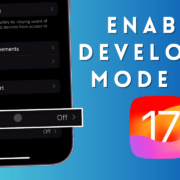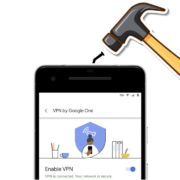External hard drives are valuable tools for expanding storage capacity and backing up important data on Mac computers. However, there may be instances where you can’t move files to external hard drive on Mac. Understanding the reasons behind this problem can help you implement appropriate solutions. Let’s explore some common reasons why you might face this issue:
1.1 Weak connections between your Mac and the external hard drive
One of the most basic reasons for the inability to copy files to an external hard drive is a poor connection between your Mac and the drive. If the cable connecting the external hard drive is faulty or not securely plugged in, data transfer may not occur. Similarly, if the USB port on your Mac is malfunctioning, it can lead to issues with recognizing the external drive.
1.2 Read-only permission setting for the external hard disk
The external hard drive might have its permissions set to read-only, which means you can only view the contents but cannot make any changes or add new files to it. This can happen if the drive was formatted on another system with restrictive permissions or if the permissions were accidentally changed on the Mac.
1.3 The drag and drop is not working on Mac
A common problem that can prevent copying files is the drag and drop feature not functioning as expected. This issue might be related to certain system settings or conflicts with third-party applications installed on your Mac.
1.4 The copy and paste is not working on Mac
Similar to the drag and drop issue, the copy and paste functionality can sometimes fail to work, preventing you from copying files to the external hard drive. This could be due to temporary glitches or conflicts within the macOS.
1.5 The storage space of the external hard drive is full
If the external hard drive is running out of free space, it will not allow you to copy additional files. Always ensure that the drive has enough available space to accommodate the files you want to copy.
1.6 The external hard drive is not compatible with your Mac
Some external hard drives are designed to work with specific operating systems, and they may not be compatible with macOS. In such cases, your Mac may not recognize the drive or allow data transfer.
1.7 The external hard drive is corrupted Data corruption on the external hard drive can lead to various issues, including the inability to copy files. Corruption may occur due to sudden disconnection during data transfer, power fluctuations, or physical damage to the drive.
Part 2: Here are Workarounds If You Can’t Copy from Mac to External Hard Drive
Now that we’ve explored the possible reasons behind the problem, let’s look at some effective workarounds to resolve the issue:
2.1 Check the formatting of the external hard drive
One of the most common reasons for data transfer issues between Mac and an external hard drive is incompatible formatting. Many external hard drives come pre-formatted in Microsoft’s NTFS file system, which is primarily used in Windows. While macOS can read from NTFS drives, it only provides read support, not write support, by default.
To check the formatting of your external hard drive, follow these steps:
- Connect this external hard drive to your Mac and then open “Finder” from the dock or the menu bar.
- Locate and select the external hard drive from the list of connected devices.
- Right-click on this external HD and select “Get Info.”
- In the information window, check the “Format” field to see if it’s NTFS.
- If the external hard drive is formatted in NTFS, you have several options to enable write support on Mac:

If you find that the external hard drive is indeed formatted with NTFS, there are a few workarounds you can try to enable write access on your Mac.
- Use an NTFS for Mac software:
Consider using a third-party tool like iBoysoft NTFS for Mac, which is Apple-trusted and allows for read and write access to NTFS drives on macOS. This software automatically mounts connected NTFS disks in read-write mode, enabling you to transfer files between your Mac and the NTFS drive seamlessly.

- Format the NTFS drive to FAT32 or exFAT:
Another option is to reformat the external hard drive to a file system that is compatible with both Windows and macOS, such as FAT32 or exFAT. However, it’s important to note that reformatting the drive will erase all existing data, so make sure to back up any important files before proceeding.
2.2 Check the permissions of the external hard drive
Permissions on the external hard drive might be set in a way that restricts your ability to copy files to it. To check and modify permissions, you can follow the simple steps below:

- Connect the external hard drive to your Mac computer via USB and then open “Finder” and locate the external hard drive in the list of connected devices.
- Right-click on the external device, and then, select “Get Info.”
- In the information window, scroll down to the “Sharing & Permissions” section.
- Please ensure that your user account possesses “Read & Write” privileges. If not, click on the lock icon, enter your administrator password, and click the “+” button to add your user account with the appropriate permissions.
2.3 Restart your Mac
A simple yet effective solution for various technical issues is to restart your Mac. Rebooting the system can resolve temporary glitches and errors that might be preventing file copying.
Save any unsaved work, click on the Apple icon in the menu bar, and select “Restart” to restart your Mac.
2.4 Run First Aid to Check and Repair the Drive
One common reason for the inability to copy files from a Mac to an external hard drive is drive corruption or errors. To address this, you can utilize the built-in “First Aid” feature in macOS. First Aid is a disk utility tool that scans and repairs disk-related issues. Here’s how you can run First Aid:

- Connect the external hard drive to your Mac computer and then open “Disk Utility” by going to Applications > Utilities > Disk Utility.
- In the Disk Utility window, select the external hard drive from the list of available drives.
- Click on the “First Aid” button located in the toolbar, at last, click “Run”.
First Aid will examine the drive for any errors and attempt to repair them. If any issues are found and successfully resolved, you should be able to copy files to the external hard drive without any problems.
2.5 Update Your Mac
Outdated software can sometimes lead to compatibility issues, including problems with copying files to an external hard drive. Updating your Mac to the latest version of macOS can often fix these issues. You can update your Mac in this way:
- Click on the Apple menu in the top-left corner of your computer screen, select “System Preferences” from the drop-down menu, and then choose “Software Update.”
- If updates are available, click on the “Update Now” button to download and install them on your computer.
Updating your Mac ensures that you have the latest bug fixes, performance improvements, and compatibility enhancements. After updating, try copying files to the external hard drive again to see if the issue has been resolved.













